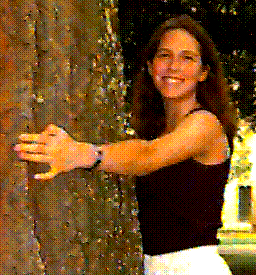
Genevieve's Home page |
|
These are some of the observations that we have made so far in our Physical Geology 1001 class.
Table of Contents
The web page that we recieved most of our observations from is => http://www.ngdc.noaa.gov/mgg/image/relief_slides1.htmlView of the Rotating Globe
-There is a ridge of high elevation in the mid-section of the Atlantic Ocean that extends from pole to pole, basicly.
-From the ridge, the elevation slopes down to deeper places on the ocean floor.
-Newer rocks on the ocean floor are located at the highest elevations of the ridge, while older rocks are farther away from the ridge. This is also true with the other ridges that are located throughout the ocean floor, including, the ridge along the western side of the Americas in the Pacific Ocean.
-If you would take out the newer parts of the ocean floor close to the ridges, you would observe that the older parts of the ocean's bottom seem to fit in their places.
-Strech marks are located on the ridges that off-set the high points of the ridge.
-There is a row of older island formations extending westward from the Hawaiian Islands. This may be due to there being a hot spot located under the Hawaiian Islands today. As the Pacific plate moves slowly westward, the hot spot stays permanent.
-A deep trench streches along the coast of Russia and continues eastward to Alaska.
Return to Table of Contents
-The highest points of elevation in the Americas lie along the west coast.
-Asia's highest elevation is located north of India in the Himalaya Range. This range is elongate East-West, while in other areas the mountains have a different orientation
-The continents have a apparent fit to them as if they had once been one body.
- The continental plates tend to be denser than the ocean plates so that at a converging plate boundary between a continent and an ocean plate the ocean plate will go under the continent plate.
Return to Table of Contents
-Volcanoes are not evenly distributed throughout the world; only concentrated along the ridges or trenches.
-The highest concentration lies along the west coast of the Americas.
- The plate that is going under another plate will have its rock melted by the heat of the Earth only to come up again in the form of lava to build up another volcano.
-The two main types of volcanoes are Composite and Shield.
- Composite Volcanoes
These volcanoes usually occur at convergent plate boundaries. They are most likely shaped in a very tall cone because of their explosive style. The debris going straight into the air and then coming right back down. The magma that comes from the volcanoes tends to be high in viscosity due to its low temperature and high composition levels of silica and gases.
- Shield Volcanoes
These volcanoes tend to be almost the exact opposite of the above mentioned volcanoes. They usually occur at divergent plate boundaries. Shield volcanoes have a very wide surrounding basin from the central point of lava flow due to the low viscosity of their lava. Also these volcanoes have lava with high temperatures and low concentrations of silica and gases.
Return to Table of Contents
-They are confined to specific belts just as the volcanoes.
-Locations of distribution: Mid-Atlantic Ridge, Circum Pacific Belt(Japan), Mediterranean-Himalayan Belt.
-At a plate boundary, when one plate is moving under another, the depth of the earthquakes seem to be deeper on the side of the boundary that is opposite the submerging plate.
-Subduction zones of plate boundaries tend to have more earthquake activity than do divergent boundaries.
-For more information on Earthquakes
Return to Table of Contents
FOR MORE INFORMATION ON PLATE
TECTONICS

Genevieve's Home page |
|
Graphics art by: Andy Evans